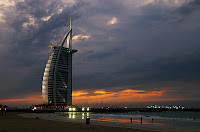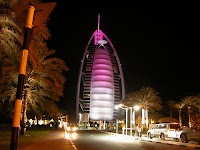Location:
Isla de sa Ferradura, also known as Isla del Bosc, is situated in the beautiful bay of San Miguel, next to the rocky island of Isla Murada which was in earlier centuries used to house prisoners.
 Accommodation:
Accommodation:
The white casa has exceptionally luxurious and majestic living space, in which nothing has been left to chance. The beautiful romantic bedrooms and guest suites have all facilities one could think of. Principal Suite: This suite is possibly more luxurious than the other. The view of the sea and the lush gardens are majestic from here. Bamboo Suite: It gives the guest the feeling of an experienced traveller, arriving in an oasis of tropical relaxation. The bath here is truly a thrill. Perla Suite: The spotless white bathroom with all luxury imaginable, the white bar, the white wardrobe and all other facilities. Suite Azul: In the Azul Suite the blue-azure colours are dominant, which give it a fresh and unusual atmosphere.
 Dining:
Dining:
A large professional and cosy designed Spanish kitchen gives every chef the possibility to create exquisite Spanish-French culinary delights. The kitchen staff will prepare the most delicious dishes. First of all, regional meals of Ibiza consisting primarily of cuisine using vegetables and fruit from the island itself, as well as fresh fish, fresh seafood and various meat dishes.
Activities:
A separate cave complex offers total body relaxation with a whirlpool, Turkish bath, sauna, solarium, infrared cabins and a beauty salon with massage facilities. The island offers all watersport facilities including waterskiing, jetskiing, watercycling, surfing, fishing, diving and more. The island also offers various sporting facilities including fully equipped gymnasium with modern equipment, aerobics, water aerobics, volleyball etc. Isla de sa Ferradura has its own entertainment center with modern flat screens where the latest movies can be shown through the resort«s satellite system or video and DVD computer collection.
 Getting there:
Getting there:
Most travellers arrive in Ibiza by yacht, or via the international airport south of Ibiza city, either by private jet, scheduled flight or charter. In the future, you will be able to travel from the international airport to Isla de sa Ferradura by helicopter, which takes only a few minutes or to drive with the island car to Puerto San Miquel where you can be transported to the island by speedboat.
 Best time to travel:
Best time to travel:
Most days during summer, the temperature hovers around 27°C (85°F), in May-June or September-October; the weather is still pleasant and warm. Winter (December, January and February) can be a peaceful time. Even in winter, though, you are bound to get one or two days of the much-touted 300 days-out-of-the-year worth of sunshine.
Price:
Rates (depending on season and number of travellers): EUR 130 000 - EUR 165 000 per week / all-inclusive






















































